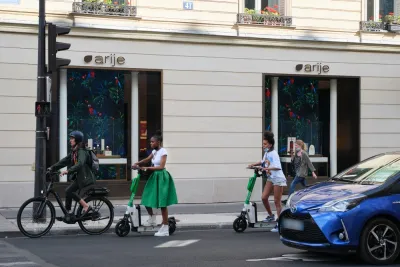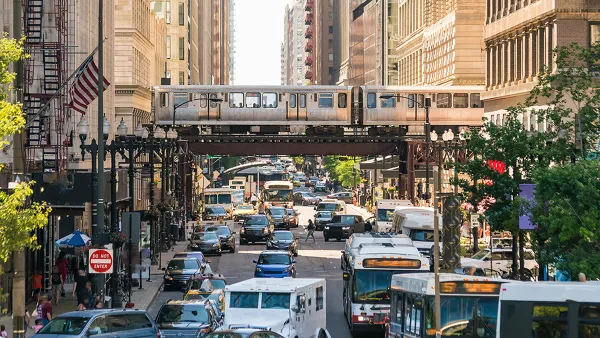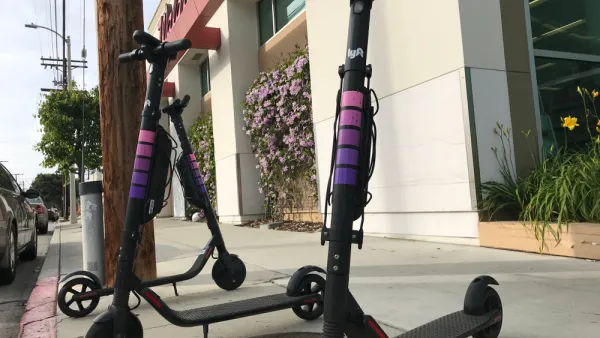Cities should expect to see increases in automobile trips, and resulting consequences, if they ban or limit the use of electric scooters or other micromobility devices, according to new research.

According to research published via open access by the journal Nature Energy, banning the use of micromobility devices (i.e., electric scooters) at night leads to a large increase in automobile trips.
The research generated reports findings of a natural experiment in Atlanta, where the city set geofences on rented scooters to disable their operation at night—“guaranteeing near perfect compliance.”
“Evidence from a natural experiment in [Atlanta] shows increases in travel time of 9–11% for daily commuting and 37% for large events,” according to the study's authors.
As noted in the study's literature review, prior research into micromobility has revealed little about the effects of the mode's adoption on automobile traffic. Findings have focused instead on loss of public transit trips as a result of shared micromobility. Notably, scooters have the opposite effect on mode share when compared to ride-hailing companies, which displace riders from public transit and active modes like biking and walking.
FULL STORY: Impacts of micromobility on car displacement with evidence from a natural experiment and geofencing policy

National Parks Layoffs Will Cause Communities to Lose Billions
Thousands of essential park workers were laid off this week, just before the busy spring break season.

Retro-silient?: America’s First “Eco-burb,” The Woodlands Turns 50
A master-planned community north of Houston offers lessons on green infrastructure and resilient design, but falls short of its founder’s lofty affordability and walkability goals.

Delivering for America Plan Will Downgrade Mail Service in at Least 49.5 Percent of Zip Codes
Republican and Democrat lawmakers criticize the plan for its disproportionate negative impact on rural communities.

Test News Post 1
This is a summary

Test News Headline 46
Test for the image on the front page.

Balancing Bombs and Butterflies: How the National Guard Protects a Rare Species
The National Guard at Fort Indiantown Gap uses GIS technology and land management strategies to balance military training with conservation efforts, ensuring the survival of the rare eastern regal fritillary butterfly.
Urban Design for Planners 1: Software Tools
This six-course series explores essential urban design concepts using open source software and equips planners with the tools they need to participate fully in the urban design process.
Planning for Universal Design
Learn the tools for implementing Universal Design in planning regulations.
EMC Planning Group, Inc.
Planetizen
Planetizen
Mpact (formerly Rail~Volution)
Great Falls Development Authority, Inc.
HUDs Office of Policy Development and Research
NYU Wagner Graduate School of Public Service





























